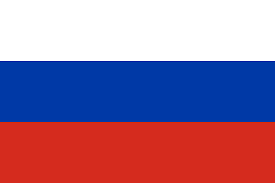Russian flag Colors Code hex, png svg
The Russian flag consists of three horizontal stripes: white on top, blue in the middle, and red on the bottom. The history and meaning of these colors have evolved over time.
History:
- Early Use (17th Century):
- The tricolor design first appeared on a Russian ship in 1668 under Tsar Alexei Mikhailovich.
- Officially adopted by Tsar Peter the Great in 1696 for the Russian merchant fleet.
- Imperial Russia (1858):
- In 1858, the black-yellow-white tricolor became the official flag of the Russian Empire.
- However, the white-blue-red flag continued to be used unofficially.
- Soviet Era (1917-1991):
- The tricolor was replaced by the Soviet flag, which featured a red field with a golden hammer and sickle and a gold-bordered red star.
- Post-Soviet Russia (1991-Present):
- The white-blue-red tricolor was officially readopted on August 22, 1991, following the dissolution of the Soviet Union.
Colors Meaning:
The meanings of the colors have varied interpretations, and they have changed over time. Some common interpretations include:
- Traditional Interpretation:
- White: Represents nobility and frankness.
- Blue: Stands for loyalty, honesty, and faithfulness.
- Red: Symbolizes courage, generosity, and love.
- Modern Interpretation:
- White: Peace and purity.
- Blue: Faith and loyalty.
- Red: Strength and courage.
- Historical Context:
- The colors are said to be influenced by the flag of the Netherlands, which Peter the Great admired during his visits to Western Europe.
The exact symbolic meanings can vary and have been the subject of debate and reinterpretation throughout Russian history.
Guess the Flags Quiz
Sharing is caring 🤗

National Symbols 👇
- 🏁 National Flags
- 🦁 National Animals
- 🐦 National Birds
- 🌻 National Flowers
- 🌴 National Trees
- 🥭 National Fruits
- 🍹 National Drinks
- 👴 National Founders
- ☘️ National Emblems
- 🍲 National Dishes
- 🏛️ National Monuments
- ✍️ National Poets
- 🕌 National Mausoleums
- 🎺 National Instruments
- 🦸 National Heroes
- 📆 National Days

